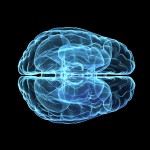
YouTube and facebook could be used alongside surveillance cameras in forensic investigations or security checks. Image: Shutterstock.
Photos from surveillance cameras, YouTube and Facebook could be used for forensic investigatons.
Humans can pick out familiar faces in a crowd, whether they’re laughing, crying or frowning; and machines may soon be able to do the same, using just a dot-sized part of the face.
Unlike conventional cameras, which are designed to mimic the human eye, machines are not restricted to human vision, said facial recognition expert Professor Ajmal Mian from the University of Western Australia. “Satellite cameras can acquire hundreds of images at different colours in the visible spectrum and many more in the infra-red which is not visible to the human eye.
“I thought if machines were to recognise faces, it was logical to use the best cameras available.”
The technology can use any part of the face, no matter how small, because multi-spectral imaging can be used to measure light reflected off a face at hundreds of discrete wavelengths in the visible spectrum and beyond. “In a normal image, a single point (or pixel) on the face carries almost no information,” Mian said.
“Whereas in a multispectral image (satellite camera), we get the reflectance profile of that point which can be used to identify the person.”
YouTube videos, Google images and other images from conventional cameras can also be used to create sets of facial images. These can then be merged to make a composite image that would be more meaningful to the machine.
“Recognition based on sets of facial images from surveillance cameras, YouTube videos, Google Images or personal photo albums is more accurate because they contain more information.”
While humans may struggle to identify someone they have only met once, the machines would be able to memorise the multiple images and match them to faces in a crowd, no matter what the expression. These images could also detect people who have used cosmetic surgery to change their appearance.
According to Mian, the technology could be used in mobile phones, computers and robots as a user-friendly way to authenticate someone.
– Laura Boness






